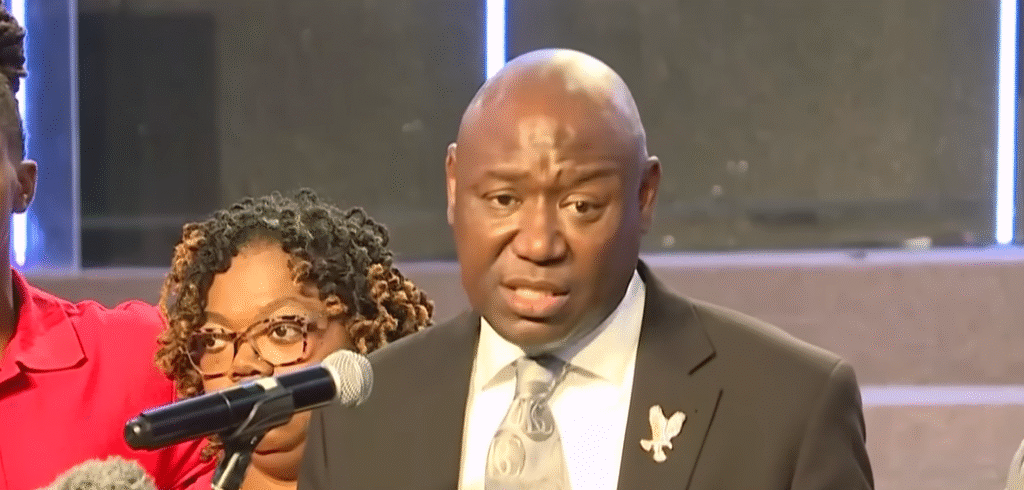William McNeil Jr., age 22, was confronted with an event that would have far-reaching consequences beyond a traffic stop on a typical afternoon in Jacksonville, Florida. He was driving calmly when he had no idea that a discussion about seat belts and headlights would turn into a violent arrest that was televised across the country. However, by recording the exchange on his phone, McNeil saved a particularly potent narrative—one that has emerged as a central topic of discussion regarding racial equity, justice, and law enforcement.
What transpired was both socially unsettling and deeply personal as seen through his camera. As a student and active church musician, McNeil questioned why he was being stopped, a question that many others might have. Which law did I violate? With a calm tone, these inquiries elicited answers that would soon involve broken glass, drawn weapons, and several punches to the face.
His lawyers, Harry Daniels and Ben Crump, who are both well-known for their support of civil rights causes, took over right away. They generated a lot of public interest by drawing attention to discrepancies in police reports and the unsettling visual evidence. Crump stated that McNeil’s only real transgression was “driving while Black,” a term that has come to symbolize a distressing but recognizable story for many American families.
William McNeil Jr – Personal and Case Overview
| Attribute | Details |
|---|---|
| Full Name | William Anthony McNeil Jr |
| Age | 22 |
| Residence | Jacksonville, Florida |
| Education | Undergraduate student |
| Occupation | Church musician, student |
| Legal Representation | Ben Crump and Harry Daniels (Civil Rights Attorneys) |
| Incident Date | February 19, 2025 |
| Charges | Resisting officer (nonviolent), marijuana possession, suspended license |
| Injuries | Fractured tooth, concussion, traumatic brain injury |
| Viral Video | Traffic stop showing police brutality, recorded by McNeil himself |
| Source | https://edition.cnn.com/2025/07/23/us/william-mcneil-jr-jacksonville-police-violence-video |

The incident, according to the police, was procedural. Sheriff T.K. Waters claims that after McNeil locked his doors, disregarded repeated orders to get out of the car, and refused to comply, force was used. However, Waters acknowledged that “yes, that force is ugly.” His defense? that being ugly does not always mean being illegal—a position that has come under heavy fire.
The official reports’ omission of important details is especially concerning. Officer D. Bowers concentrated on McNeil’s alleged noncompliance rather than the broken window or the punches. Six punches were noted by another officer, who justified them as a necessary tactic to quell opposition. But according to McNeil’s video, his refusal to get out of the car only gets worse when police threaten to smash the glass and take him out of the car by force.
McNeil asked for a supervisor during the incident, refused to give his license without explanation, and then locked his door. Legal professionals contend that these acts were within his rights, despite the fact that some may view this as defiant. He never put up a fight. He refrained from attacking. He merely inquired as to why he had been stopped—a self-advocacy maneuver that resulted in his head being smashed into the pavement.
Following the arrest, McNeil was charged with three minor offenses: driving with a suspended license, possessing a small amount of marijuana, and resisting arrest without using violence. However, the physical and psychological effects he experienced were disproportionately harsh. He suffered a traumatic brain injury, a fractured tooth, and a concussion. His lawyers claim that he still suffers from cognitive impairment and short-term memory problems.
Despite what one report claimed, he never reached for the big knife that was discovered in his car. His legal team made a point of emphasizing that the use of force cannot be justified by the presence of an unused item. They contended that the knife was a tool that was left unaltered and not a threat.
It is noteworthy that McNeil maintained his composure despite being hit. He didn’t strike back. He didn’t yell. All he did was try to document, to record, to endure. He brought attention to a situation that might have otherwise gone overlooked or been misrepresented because of his tenacity.
Since the video’s release, McNeil’s story has gained a lot of traction and has come to represent opposition to abuse of power. Support from the public has gradually increased. There have been vigils. Hashtags are popular right now. Additionally, discussions that appeared to have stalled have started to pick up steam again.
His case is especially instructive in the context of contemporary activism. It demonstrates how who controls the camera can affect justice. McNeil questioned a system that frequently silences young Black men by taking charge of his story. His video transformed a violent incident into a rallying cry, acting as both empowerment and proof.
However, law enforcement’s response is still defensive. The officers involved have not been subject to any disciplinary action. Rather than emphasizing accountability, the message has leaned toward institutional protection. Those who support McNeil find this silence especially hurtful.
The pressure is still being applied by his legal team through strategic advocacy. Public accountability, departmental reform, and, above all, justice for a young man who ought to have left with a warning rather than a wound are their clear objectives.
It is impossible to overstate the importance of this case going forward. It’s about rethinking how public safety functions, not just about one incident. Many people hope that McNeil’s bravery will inspire others to record, speak up, ask questions, and have higher expectations.

